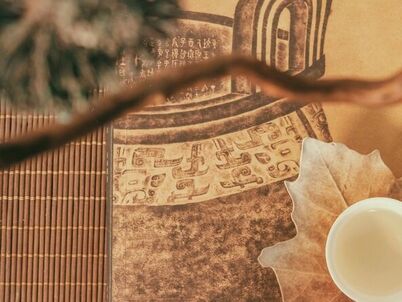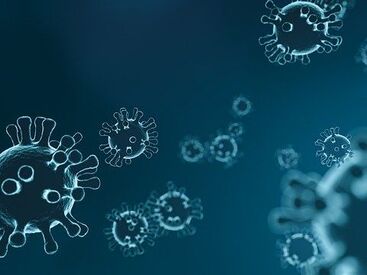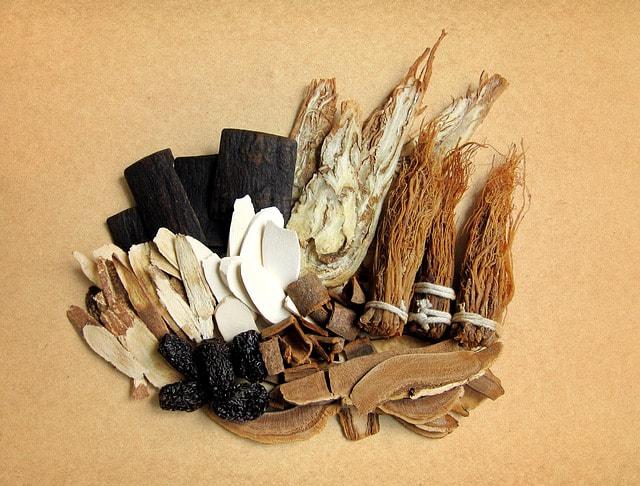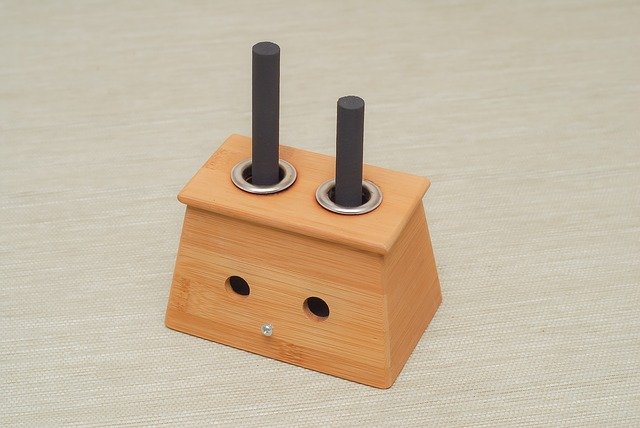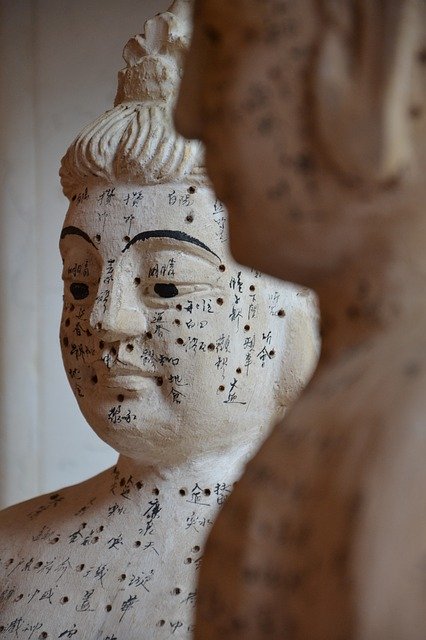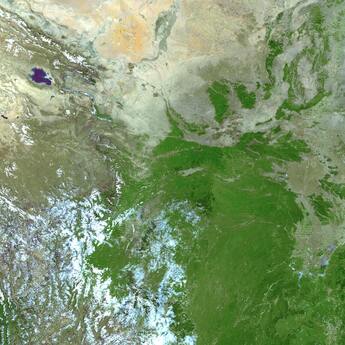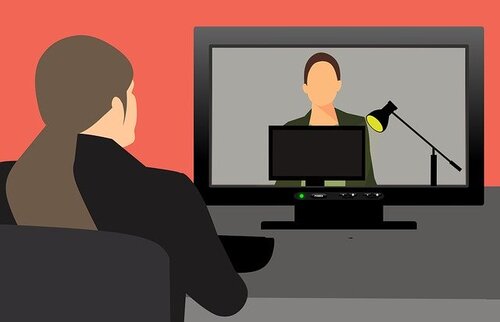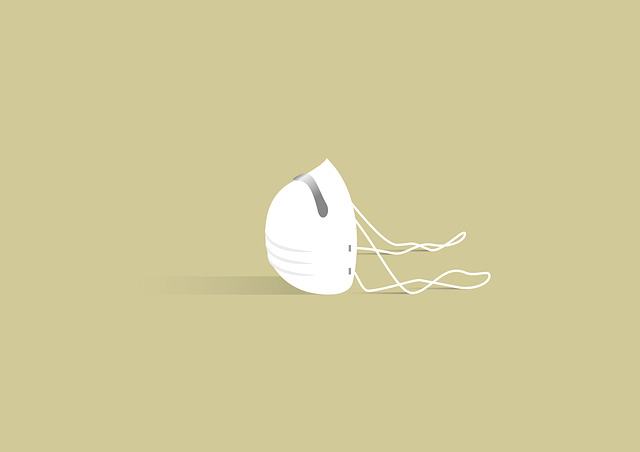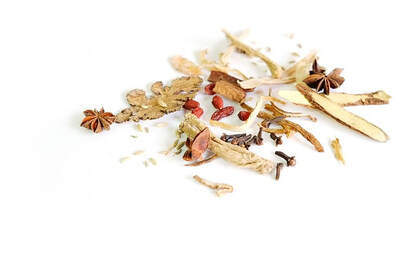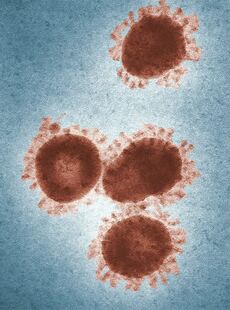How is COVID-19 diagnosed and treated using TCM?The Chinese-language newspaper Sing Tao (stnn.cc) reported earlier this year that 93.5% of COVID-19 patients in Guangdong had been treated with traditional Chinese medicine (TCM). Clinics encouraged the use of TCM as early intervention in mild cases of coronavirus infection. As of May 20th, 1481 of 1488 patients receiving TCM treatment were cured and subsequently discharged. 3000-YEAR HISTORY In traditional Chinese medicine, which is based on empirical observation and practical medical knowledge, the physician observes patterns in a multiplicity of clinical events to visualize a bodily landscape. Aspects of activity or illness in the body are corresponded to elements in nature and individual disharmonies are noted. A system of pre-technological medical thought, TCM has its own systems of the body and parallel notions of reharmonizing opposites. Diagnosis is based on recognizing and precisely describing patterns of disharmony and then reconciling hostile elements in the body. Extremes are balanced. The highly personalized diagnostic process attempts to capture the essence of the individual patient. Tools developed by Chinese medicine over 3000 years to diagnose, prevent, and cure disease: food as medicine, herbal remedies, acupuncture, moxibustion, tongue diagnosis, pulse diagnosis, and facial pallor. DISEASE THEORIES Historically, TCM has categorized infectious disease as Shanghan (damaged by cold) and Wenbing (warm disease). Shanghan (伤寒) Shanghan refers generally to heat (febrile) disease caused by exogenous pathogenic factors and specifically to acute diseases caused by exogenous cold-evil or malicious cold. Shanghan in later Han Dynasty medical references is a pathological condition described as externally contracted heat disease with absence of sweating, stiff neck, and a tight floating pulse. In Shanghan theory, all heat diseases are of the cold damage kind. Stage 1 starts at the exterior, the respiratory tract, and manifests as chills and sniffles. Stage 2 progresses inward to the lungs and the digestive tract and may manifest as cough and gastrointestinal symptoms. Stage 3 moves deeper into the digestive tract and the kidneys. Wenbing (温病) Wenbing is defined as any of various heat diseases due to exogenous pathogenic warmth or heat, characterized by rapid onset and shifts, pronounced heat signs, and a tendency to form dryness and damage the yin. It is infectious and seasonal in nature. Originating in the Ming Dynasty 500 years ago, Wenbing theory builds on earlier Shanghan concepts to elucidate the spread of pathogens from person to person. HOW DOES TRADITIONAL CHINESE MEDICINE CATEGORIZE COVID-19? TCM views COVID-19 using concepts from Shanghan and Wenbing. In both theories, the disease progresses from the exterior to the interior. COVID-19 pneumonia is categorized as Wenbing. The main cause of this disease is damp heat with pestilent toxin, and the pathological features are “dampness, heat, stasis, toxin, and vacuity.” In clinical practice, the COVID-19 patient may present with fever, fatigue, sore muscles, feeling of heaviness in the body, poor appetite, and greasy tongue coating – indicating that the pathogen is in the exterior. Most patients have cough, chest oppression, panting and/or urgent breathing. The fundamental pathogenic factors are dampness and heat. PATTERNS ASSOCIATED WITH COVID-19 DISEASE COVID-19 manifests differently based on patient age, disease state, and geographic location. In assessing the patient, the TCM practitioner performs a thorough review of symptoms and selects the pattern that best describes the individual patient. Pathogenic Damp Stagnation in the Lungs 邪湿郁肺型 Stagnation makes qi movement through this pivot difficult and interferes with the qi dynamic of the lungs. Early symptoms include low-grade fever or no fever, slight aversion to cold, sensation of heaviness and stuffiness in the head and body, muscle pain and soreness, fatigue, cough with scant phlegm, dry mouth with little intake of fluids, feeling of oppression in the chest, nausea, poor appetite, diarrhea, and thin stool. The tongue is pale red with a greasy white coating; the pulse is floating and slightly rapid. Pathogenic Heat Obstructing the Lungs 邪热阻肺型 In this pattern, the lungs lose the ability to diffuse and descend. Symptoms include fever or high fever, cough, yellow or thick phlegm, fatigue, headache, pain and soreness throughout the body, dryness and bitter taste in the mouth, irritability, constipation, and reddish urine. Tongue is red with a greasy yellow coating. Pulse is slippery and rapid. Damp-Warm Stagnation in the Lungs 湿温郁肺型 Symptoms include fever, strong or abnormal sensation of heat, slight aversion to cold, cough, yellow and thick phlegm, chest oppression, shortness of breath after exercise, lack of energy, dry mouth, lack of appetite, abdominal distention, dry and bound or sluggish stool, a sensation of incomplete defecation, and yellow urine. Pale red tongue with thin yellow greasy coating. Slippery and rapid pulse. Pestilent Dampness Damaging the Lungs 疫湿伤肺型 Normal body temperature. Symptoms may include cough with little or no phlegm, chest oppression or shortness of breath after exertion, lethargy and fatigue, spontaneous sweating, palpitations, or poor appetite. Tongue is pale red with a white coating or slightly greasy. HOW DOES TRADITIONAL CHINESE MEDICINE TREAT COVID-19? To treat COVID-19, TCM employs herbs that transform dampness and release toxins, as well as herbs that clear heat and resolve toxins. The goal is to diffuse the lungs to vent pathogens. TCM uses herbal formulas, moxibustion (mugwort burned at the skin over acupuncture points), and acupuncture in combination because the approaches act synergistically to improve symptoms. Treatment is tailored to the patient’s symptoms and based on the practitioner’s knowledge about local manifestations of the virus. Guangdong Province The Chinese Medicine Protocol for Pneumonia Due to Novel Coronavirus released in Guangdong Province outlines the particular epidemiological features, clinical presentation, and clinical features of the progression of COVID-19 pneumonia in Guangdong. The climate in southern China is damp and humid, and pestilent qi easily mixes with this dampness, first attacking the lung defenses, particularly in patients with a weak spleen and stomach. If the healthy qi is unable to defeat the pestilent unhealthy qi, then the pathogenic toxin moves to the interior and transforms into heat, harming the bodily fluids and depleting the humors, sometimes to the point of agitating the blood, which can create a critical situation. Hubei Province The novel coronavirus first appeared in humans in the cold, damp winter of Wuhan, a central Chinese city situated on the Yangtze River. Clinical departments at Hubei Provincial Hospital of Traditional Chinese Medicine collaborated to investigate and formulate protocols for preventing and treating COVID-19-related pneumonia, which TCM practitioners termed “damp heat in the lungs.” Critical viral respiratory disease formulas Primary treatment strategies target latent heat and damage to qi and yin. TCM concludes that the cause of coronavirus is primarily dampness, which obstructs the spleen and blocks the lungs (湿困脾闭肺) and disrupts the bearing [rising and falling] of the qi dynamic (⽓机升降失司). Damp toxins are converted into heat, bowel repletion develops, damp toxins and stagnating heat are locked in, and the increasing heat leads to severe qi reversal and imbalance. Next month: Overview of Herbal Formulas and the Properties of Individual Herbs This blog introduces theories from traditional Chinese medicine. It is provided for educational purposes only. If you have COVID-19 symptoms, please contact your local public health service or a physician. Seek the advice of a qualified healthcare practitioner before taking any herbal medicine, dietary supplement, or pharmaceutical remedy.
0 Comments
Healthcare for patients with limited English proficiencyOPEN LETTER TO GOVERNORS AND HOSPITALS The Certification Commission for Healthcare Interpreters (CCHI) has issued an open letter to governors and hospital associations to raise awareness about the safety of healthcare interpreters and language access services for patients with limited English proficiency (LEP) and their families, as well as the safety of all healthcare workers during the current unprecedented COVID-19 pandemic. Healthcare interpreters work in close quarters and in close proximity to patients and the safety of all workers with direct patient contact must be the number one priority. This includes physicians, nurses, allied professionals, and face-to-face/on-site healthcare interpreters. PERSONAL PROTECTIVE EQUIPMENT The open letter reminds hospitals and healthcare systems that face-to-face/on-site healthcare interpreters should be provided the same level of protection and use of personal protective equipment (PPE) as any healthcare provider for whom they are interpreting while also recognizing that PPE shortages may necessitate certain limiting measures. It is extremely important for managers to have transparent and honest conversations with interpreters and collectively come to an understanding on when and to whom PPE is provided. ALTERNATIVES TO ON-SITE INTERPRETATION When PPE is not available there are alternatives to face-to-face/on-site interpretation. Ultimately, if appropriate PPE is not available for an interpreter, then alternatives must be provided to both reduce the spread of the coronavirus by interpreters and ensure their personal safety. Unlike most healthcare providers, interpreters work in different departments, different facilities, and even different campuses throughout the day. Their inadequate protection will result in spreading the virus not only in the community and to their families but also to other healthcare workers and patients within and outside a specific facility. REMOTE INTERPRETING The CCHI recommends that all hospitals, health systems, clinics, and healthcare providers deploy remote interpreting for most of their interactions with LEP patients and their families, as the primary modality for delivery of language access services in the time of this pandemic. The implementation of remote interpreting may take time and require certain information technology solutions as well as evaluation for compliance with laws and regulations. However, the implementation of remote interpreting will allow facilities to reserve much needed PPE for healthcare professionals who must be in direct contact with patients. Furthermore, face-to-face interpreters have a higher risk of becoming a vector of infection even with the appropriate use of PPE due to the mobility of their job. When institutions utilize telemedicine and telehealth options for providing care, they must incorporate remote interpreting into these solutions to ensure equal access to healthcare for limited English proficiency patients. HOW TO IMPLEMENT REMOTE INTERPRETING Remote interpreting may be implemented in the following ways:
A BRIEF NOTE ON CONFERENCE INTERPRETING The International Association of Conference Interpreters (AIIC) has issued best practices for interpreters during the COVID-19 crisis. AIIC's Technical and Health Committee and Taskforce on Distance Interpreting specify rules on social distancing in interpreting booths, social distancing for sign language teams, disinfection, and the use of disposable gloves and personal headset covers. REFERENCE CCHI Open Letter on Ensuring Healthcare Interpreters’ Safety during the COVID-19 Pandemic. April 3, 2020. https://cchicertification.org/covid-19/covid-19-update/. Chinese herbs in coronavirus treatmentTRADITIONAL CHINESE HERBAL REMEDIES As evidenced by a February 18th tweet from China Xinhua News, healthcare practitioners across China are relying on centuries-old remedies to treat the novel coronavirus. In the absence of targeted drugs and vaccines, with continual updates to the national diagnosis and treatment program for novel coronavirus, the role of traditional Chinese medicine (TCM) is on the rise. More COVID-19 patients are being treated with Chinese medicine or integrated Western-Chinese medicine, and the role of TCM herbal prescription formulas is expanding. What formulas are they using? What do the properties of these herbs tell us about TCM approaches to the virus? USE OF CHINESE HERBS TO TREAT THE CORONAVIRUS With an array of treatment methods and a wealth of experience in its arsenal, Chinese medicine has been used to fight plagues and epidemics for thousands of years. The focus of TCM is not just the virus itself but also symptoms and changes to the body caused by the invasion of the virus. Treatment starts with the patient as a whole, to identify patterns and then dispel sickness and support health. HERBAL FORMULA USAGE RATES 80% TO 95% Reports from throughout China indicate TCM formula usage rates of 80% to 95% in confirmed cases of novel coronavirus. One specialist described isolation wards containing a mix of mild, typical, and severe cases of novel coronavirus. Typical cases are characterized as imaging findings in the lungs but the absence of disease progression to respiratory failure. In hospitals, traditional Chinese medicine plays a significant role in regulating diarrhea, constipation, and other gastrointestinal symptoms; in addition, intervention with Chinese medicine may stop the condition from progressing to the severe and critical stages. WHAT FORMULAS ARE BEING USED? WHAT FORMULAS HAVE BEEN VALIDATED? 清肺排毒汤 The National Health Commission and the State Administration of Traditional Chinese Medicine recommend Qing Fei Pai Du decoction (清肺排毒汤); clinical observation and data analysis have been performed on the therapeutic efficacy of this classical TCM formula. One formula for Qing Fei Pai Du decoction appearing on multiple sites, including Baidu, listed 21 ingredients. The top ingredients in terms of quantity are calcium sulfate, Radix bupleuri (common name bupleurum, effective in the treatment of alternating chills and fever; may induce headache or nausea), Poria cocos (efficacy in draining dampness and transforming phlegm; concurrent administration of diuretics contraindicated), Radix dioscoreae (Chinese yam, known to tonify qi and yin of the lungs, spleen, and stomach; may have hypoglycemic effects, use with caution in comorbid hepatobiliary disease). 肺炎一号 Pneumonia Formula No. 1 (肺炎一号), developed by the Chinese Medicine Department at Guangzhou Eighth People's Hospital, and its variations Pneumonia Formula No. 2, Pneumonia Formula No. 3, Pneumonia Formula No. 4, and Pneumonia Formula No. 5 are also in use. Formula No. 1 has achieved favorable clinical results in Guangzhou. Formula No. 1 includes two herbs that clear heat and relieve toxicity, Flos lonicerae (honeysuckle flower) and Fructus forsythiae (forsythia fruit), along with 16 other ingredients. VARIATIONS In Chinese medicine, the treatment regimen adopted varies by person. If a patient is in poor physical condition, dispelling disease is not enough, treatment must focus on supporting health. For example, in those with poor appetite it is necessary to focus on spleen health; in patients with damp-heavy qi and thick tongue coating it is necessary to improve the flow of urine. Ear needling (acupuncture) may be used to treat the patient’s psychological state and resolve issues of insomnia, in order to restore the patient’s biological clock. Just as treatment varies by individual patient, the virus varies by region. This too is a factor in treatment selection. It would not be appropriate to select one uniform formula for the entire nation. NOT ADVOCATED FOR THE HEALTHY NOT ADVOCATED FOR THE PREVENTION OF CORONAVIRUS According to the head of a university of traditional Chinese medicine, the entire populace does not need to take this medicine. Healthy people need to improve resistance in order to avoid getting sick. High-risk populations, including healthcare providers, may take herbal remedies as appropriate. Practitioners emphasized that these are treatment prescriptions and are not recommended as preventive prescriptions. The general public should not self-administer these prescriptions. This blog briefly examines TCM principles and herbal remedies in light of recent Chinese media reports on novel coronavirus treatment in China. This examination is not intended to replace medical advice from a trained and qualified professional, and the use of herbal preparations is not recommended without the advice of a healthcare provider. Substances in herbal preparations may interact with prescription drugs to eliminate therapeutic efficacy or induce toxicity.
JANUARY 24TH UPDATE FROM THE CHINESE GOVERNMENT WEBSITEThe January 24, 2020, news update from the Health Emergency Response Office on the Chinese government website reported hundreds of confirmed cases of novel coronavirus nationwide and 25 deaths in Hubei Province and Hebei Province – an additional eight deaths compared to the January 23rd update, which detailed the anonymized medical histories of these initial 17 deaths. The majority were of advanced age (15 of the 17 over age 60), male (13 of 17), and suffered from such underlying conditions as liver cirrhosis, hypertension, cerebral infarction, diabetes, heart disease, chronic obstructive pulmonary disease, chronic renal insufficiency, Parkinson’s disease, and bronchitis. Most but not all presented with fever. Other symptoms at admission:
Novel coronavirus was confirmed through positive nucleic acid testing and monitored by electrocardiogram, lung CT, and blood-gas analysis. Therapies included oxygen, extracorporeal membrane oxygenation, endotracheal intubation (refused in some cases), anti-infectives, antibiotics, antipyretics, analgesics, and sedatives, supplemental fluids, and symptomatic therapies. Outcomes were intensifying respiratory failure, continuous declines in terminal oxygen saturation, reduced blood pressure, and ultimately death. Seven hospitals in Wuhan are offering intake for patients with high fever in order to identify new cases. |
�
AuthorKerilyn Sappington is the founder of Integrative Translations, which specializes in the Chinese to English translation of topics in conventional and complementary medicine. Archives
August 2022
Tags
All
|

